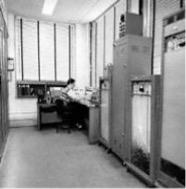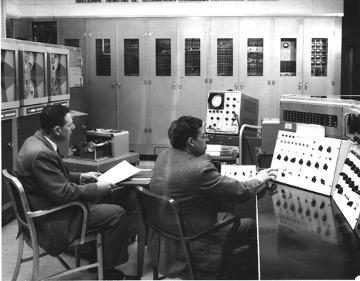Standards Eastern Automatic Computer
Date: 1950
The first fully operational stored-program electronic computer in the United States was built at NBS.

The Standards Electronic Automatic Computer (SEAC) [2] began useful computation in May 1950. The stored program was held in the machine’s internal memory where the machine itself could modify it for successive stages of a computation. This made a dramatic increase in the power of programming. Although originally intended as an “interim” computer, SEAC had a productive life of 14 years, with a profound effect on all U.S. Government computing, the extension of the use of computers into previously unknown applications, and the further development of computing machines in industry and academia.
Among the applications for the SEAC were a) creation of mathematical tables, b) early studies of numerical algorithms, c) mathematical modeling in areas such as nuclear energy, d) image processing, and e) symbolic processing for chemical structure searching. The latter two were the first ever applications of these types.
References
- R. A. Kirsch. Computer Development at the National Institute of Standards and Technology. In A Century of Excellence in Measurements, Standards, and Technology (D. R. Lide, ed.), NIST Special Publication 958, 2001. https://nvlpubs.nist.gov/nistpubs/sp958-lide/086-089.pdf
- A. V. Astin (ed.). Computer Development (SEAC and DYSEAC) at the National Bureau of Standards, Washington, DC. National Bureau of Standards Circular 551, U.S. Government Printing Office, Washington, DC (1955).




